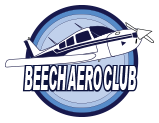A. GENERAL RULES
1. Without exception, observe the red-line temperature limits during takeoff, climb and high-performance cruise power operation.
a. Cylinder head temperature — maximum limit listed in the Lycoming Operator’s Manual.
b. Oil temperature limit — maximum limit listed in the Lycoming Operator’s Manual.
c. TIT - maximum allowable limit specified in the Lycoming Operator’s Manual.
2. Whenever mixture is adjusted, rich or lean, it should be done slowly.
3. Always return mixture slowly to full before increasing power setting.
4. At all times, caution must be taken not to shock-cool the
cylinders. The maximum recommended temperature change should not exceed 50˚ F per minute.
B. Leaning the normally aspirated engines
1. Use full-rich mixture during takeoff or climb. Careful observation of engine temperature instruments should be practiced to ensure the limits specified in Lycoming Operator’s Manual are never exceeded. Refer to the aircraft POH (Pilot’s Operating Handbook) or AFM (Aircraft Flight Manual) for more specific instructions.
2. For 5,000 feet density altitude and above, or high ambient temperatures, roughness or reduction of power may occur at full rich mixture. The mixture may be adjusted to obtain smooth engine operation. For fixed-pitch propellers, lean to maximum RPM at full throttle prior to takeoff where airports are at 5,000-feet density altitude or higher. Limit operation at full throttle on the ground to a minimum. For direct-drive and for normally aspirated engines with a prop governor, but without fuel flow or EGT, set throttle at full power and lean mixture at maximum RPM with smooth operation of the engine as a deciding factor.
3. For cruise powers where best power mixture is allowed, slowly lean the mixture from full rich to maximum power. Best power mixture operation provides the most miles per hour for a given power setting. For engines equipped with fixed-pitch propellers, gradually lean the mixture until either the tachometer or the airspeed indicator reading peaks. For engines equipped with controllable pitch propellers, lean until a slight increase of airspeed is noted.
4. For a given power setting, best economy mixture provides the most miles per gallon. Slowly lean the mixture until engine operation becomes rough or until engine power rapidly diminishes as noted by an undesirable decrease in airspeed. When either condition occurs, enrich the mixture sufficiently to obtain an evenly firing engine or to regain most of the lost airspeed or engine RPM. Some engine power and airspeed must be sacrificed to gain a best economy mixture setting.
NOTE — When leaned, engine roughness is caused by misfiring
due to a lean fuel/air mixture which will not support combustion. Roughness is eliminated by enriching slightly until the engine is smooth.
5. The exhaust gas temperature (EGT) offers little improvement in leaning the float-type carburetor over the procedures outlined above because of imperfect mixture distribution. However, if the EGT probe is installed, lean the mixture to 100˚ F on the rich side of peak EGT for best power operation. For best economy cruise, operate at peak EGT. If roughness is encountered, enrich the mixture slightly for smooth engine operation.
6. When installing an EGT probe, the probe must be installed in the leanest cylinder. Contact the airframe or kit manufacturer for the correct location. In experimental or custom applications, multiple probe instrumentation is required, and several power settings should be checked in order to determine the leanest
cylinder for the specific application.
7. During normal operation, maintain the following recommended temperature limits:
a. Cylinder head temperature — limit listed in the Lycoming Operator’s Manual.
b. Oil temperature — limit listed in the Lycoming Operator’s Manual.
8. For maximum service life, maintain the following recommended
limits for continuous cruise operation:
a. Engine power setting — 65% of rated or less.
b. Cylinder head temperatures — 400˚ F. or below.
c. Oil temperature — 165˚ F. — 220˚ F.
